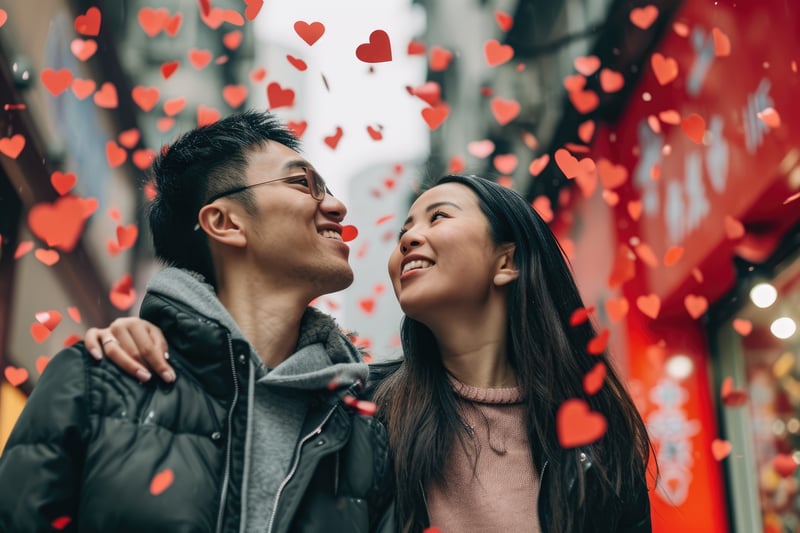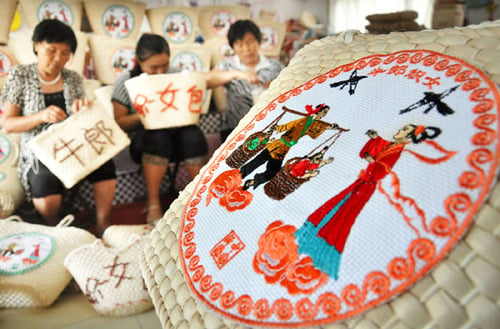
While Valentine's Day is the most popular romantic holiday, there are other several celebrations of love in other regions of the world, especially in the Asia Pacific region. From holidays devised by businesses to practices based on legends, check out how celebrations of love in Asia were created and observed up to this day.
Japan and South Korea - White Day
 Held every March 14, White Day is a celebration that started in Japan as a response to Valentine’s Day. This holiday stems from an extensive marketing campaign supported by the Japanese National Confectionary Industry Association in the late ‘70s, as a ‘paying back day’ for men to reciprocate their feelings to women who have treated them with sweets and gifts every Valentine’s Day by giving white marshmallows, chocolates, and other white-colored gifts. Eventually, this became a yearly national trend and became popular in South Korea too.
Held every March 14, White Day is a celebration that started in Japan as a response to Valentine’s Day. This holiday stems from an extensive marketing campaign supported by the Japanese National Confectionary Industry Association in the late ‘70s, as a ‘paying back day’ for men to reciprocate their feelings to women who have treated them with sweets and gifts every Valentine’s Day by giving white marshmallows, chocolates, and other white-colored gifts. Eventually, this became a yearly national trend and became popular in South Korea too.
Nowadays, White Day is an opportunity for men to reciprocate their feelings by providing simple yet creatively presented gifts, like lollipop bouquets. Some follow the so-called 'rule of three', which dictates that their gift must be roughly three times the value of the gift they received on Valentine’s Day. If they don’t send back a gift or send a gift of equal value instead of the power of three, it means that they are not interested in pursuing a relationship.
Due to cultural shifts around gender norms, societal expectations, and even financial viability, White Day has become less and less popular among the Japanese, and possibly with Koreans. A decrease in spending by women on Valentine's Day has led to a decrease in spending on White Day by men as well. The Japanese people have also mentioned how the country's okashi gift-giving culture leads towards a pricey cycle and pressure to maintain harmony among relationships, as women have started to challenge the tradition. Additionally, a 2019 survey showed that 60% of the female respondents said that they prefer to buy chocolates as personal treats and for family members, while 36% of the female respondents said they planned on keeping up with the White Day practices.
Indonesia - Omed-Omedan
 One of the cultural highlights in Bali, Indonesia is Omed-Omedan, more known in the west as the Bali Kissing Festival. Preserved and observed by residents (‘Banjar’) of Kaja in Sesetan Village, South Denpasar, this festival features thousands of unmarried young people kissing and hugging each other. This has been celebrated for more than a hundred years and is held after Nyepi Day, a day of silence, fasting, and meditation among the Balinese.
One of the cultural highlights in Bali, Indonesia is Omed-Omedan, more known in the west as the Bali Kissing Festival. Preserved and observed by residents (‘Banjar’) of Kaja in Sesetan Village, South Denpasar, this festival features thousands of unmarried young people kissing and hugging each other. This has been celebrated for more than a hundred years and is held after Nyepi Day, a day of silence, fasting, and meditation among the Balinese.
In this event, the young participants are divided into two groups, men (teruna) and women (teruni). Before the ritual, all participants must attend a praying ceremony at the temple, where they will be sprinkled with holy water. The two groups then line up looking directly at each other while guided by the pecalang, or the local security officer. One person from each group will then be appointed and paraded. The two young people who are at the front of the line must embrace and kiss each other. The ritual will stop after the elders sound the whistle or pour water on the participants.
China, Taiwan, and Singapore - Qixi

The Qixi Festival, or Double Seventh Festival, is also known as the Chinese Valentine's Day. Based on a romantic legend about a weaver girl and an ox herder, it falls on the seventh day of the seventh Chinese lunar month, which in 2023 falls on August 22.
This festival has been celebrated since the Han Dynasty (206 BC – 220 AD), and in 2015, it was added to the National Intangible Cultural Heritage list by the State Council of China. Traditionally, it was observed by demonstrations of dexterity by women, such as threading a needle under the moonlight or carving designs on melon skin, worshipping the weaver fairy Zhinu through a table of offerings, and honoring oxen with wildflowers. While these are still observed in rural areas, modern-day practices are much like Valentine’s Day observances, such as giving presents to romantic partners and setting up romantic dates.
Want to learn more about what's popular with people in Asia? Then check out our other Eye on Asia entries! Check out our Asian survey about the most romantic dating ideas and our blog post about online dating in Asia during the pandemic period. See you in the next one!


 Download Panel Book
Download Panel Book


